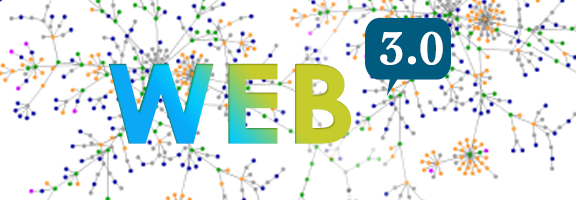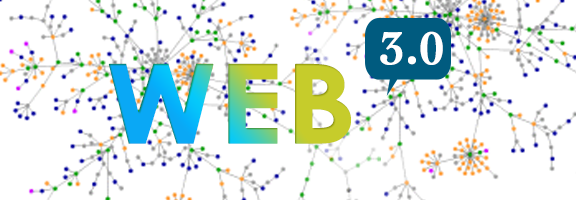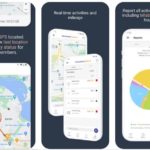Representing the Digital Enterprise Research Institute, Liam Ó Móráin , recently discussed the work of the DERI on the Semantic Web and the move from Web 2.0 to Web 3.0.
Liam explains how the evolution of Web 2.0 to Web 3.0 (also known as Semantic Web) is taking the web experience to the user in a new and more powerful way. Web 3.0 will quickly and easily combine information from very diverse sources and serve the information to the user, based on intelligent browsing.
It is due to the power of the Semantic Web that Google and other search applications serve up, not just what you search for but also related links which are specific to your search history, demographic area and personal browsing preferences. Google and other sites, such as Amazon are able to serve user-specific content within seconds, using the powerful, artificially intelligent brain of Web 3.0.
Watch the video and listen to Liam’s speech on Youtube:
How does Web 3.0 work?
Suppose you want to go and see a movie and after the film you want to find a nice restaurant in which to have a good meal. Now, if we are more specific we can search for a family movie and perhaps round the evening off with a trip to a good Steak-House. Previously you might spend a couple of hours searching for movies of the right genre, in your local area, followed by a search for a good restaurant. You might browse even longer to read reviews of the films and restaurants before you decide what to see and where to eat. You actually may end up browsing a dozen or so sites before making up your mind.
The evolution of Web 3.0 will make your search much faster and easier by allowing you to enter complex strings of text, encapsulating your full search. This means we could enter a full sentence such as: “I want to see a family film and then eat at a good steak house in my local area. Where should I go?”
The Web 3.0 browser will analyze your text and search the internet for all possible answers, and then organize the results for you before presenting them on screen. But that’s not the end of it, many internet experts believe that Web 3.0 will function like a personal assistant. This means, as you browse and search the web, the browser will continue to learn about you and your interests.
Eventually you won’t need to be so specific in subsequent searches and should be able to ask your browser open questions like “Where should I go for a night out with the family?” Your browser would then consult its records of your likes and dislikes and your current demographic location and suggest a list of family recreational outings, which the browser now knows will interest you.
It’s not so much new technology as it is ‘evolving’ technology, which has been used in specific hardware and software for a few years now. Take Audi, for example, for the past few years Audi have installed on-board computers, in their cars, which not only help mechanics to pin-point problems with the engine and working parts of the car; but these computers also learn about the driver’s habits and compensate for mistakes. This is a great safety feature since the computer can control how the wheels, brakes and controls interact with each other to create a smoother, safer driving experience.
Web 3.0 has the capability of doing the same thing for a users’ browsing experience. Although it is unlikely that it would be helpful in preventing a crash but, at least crashing your computer is less dangerous than crashing your car!
The evolution of Semantic Web
To understand where the Web is going, we need to take a quick look at where it’s been before.
Web 1.0
Originally, Hotmail or Yahoo’s services were full of read-only content and static HTML websites. Users navigated the web through link directories on Yahoo, Hotmail or AOL. This was a one-stop-shop where a user could find everything they needed or everything provided to them by the directories. However, there was no facility for users to upload and share their own content on those directories.
Web 2.0
Web 2.0 went a step further by allowing users to upload their own content such as pictures, videos, blogs etc. through websites like YouTube, Facebook, MySpace and others. However, this was still not giving users total freedom within the web since the platforms to which users would upload content were specific to the provider of the platform and therefore biased and manipulative, in favor of the provider rather than the user.
Web 3.0
With the advent of Web 3.0 we now have a much more relevant browsing experience which is tailored to the individual and their geographic area, rather than being generic or served up by a particular provider. Not only does this speed up the users’ browsing experience, but its’ Artificial Intelligence also continues to learn and update its results records as the user continues to browse.
Tim Berners-Lee (the Director of the World Wide Web Consortium) [http://en.wikipedia.org/wiki/Tim_Berners-Lee] said: “I have a dream for the Web, in which computers become capable of analyzing all the data on the Web – the content, links, and transactions between people and computers. A ‘Semantic Web’ (which should make this possible) has yet to emerge but, when it does; the day-to-day mechanisms of trade, bureaucracy and our daily lives will be handled by machines talking to machines. The ‘intelligent agents’ people have touted for ages will finally materialize…. Semantic web is an extension of the World Wide Web in which web content is expressed in machine readable language, not just in nature language. This means user-agents can read, process and understand the content using Artificial Intelligence which imitates human behavior. In other words Semantic Web is an extension of the web where content expressed can be processed independently by intelligent software agents.”
These intelligent software agents use specific search criteria, from the user, to find the perfect content to present on screen. For example; discount voucher searches, personal shopping agents, real estate agents, personal finance and budgeting agents, cheap flight or insurance agents and a host of others.
To facilitate these agents, the user creates their personal search which talks, on the user’s behalf, with the web services in the public domain. This takes the repetition out of these types of searches when performed manually, by the user. This is obviously a much faster way to gain relevant results from searches and should enhance the user’s browsing experience, by continuing to learn about the users’ likes and dislikes.
Web 3.0 and privacy
Although this type of ‘intelligent’ browsing can be very convenient, it may also be viewed as being an invasion of the users’ privacy. E-Crime Expert [http://www.e-crimeexppert.com/] believes that educating and making users aware of the privacy issues surrounding Social Networking and other sharing sites will help to protect their privacy and personal data.
It is still important for users to be aware that uploading their personal photos, videos, blogs etc. is submitting that information to an open platform, which may be viewed by absolutely anyone with access to the internet. Therefore, users must always be aware of the lack of privacy on such an open source and restrict their uploads and shares to information which cannot be used to harm them or commit fraud against them.























0 Comments